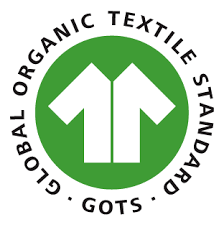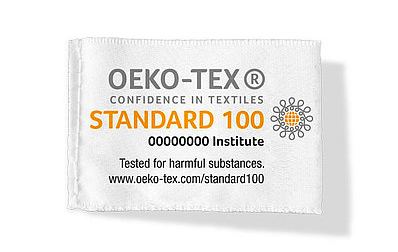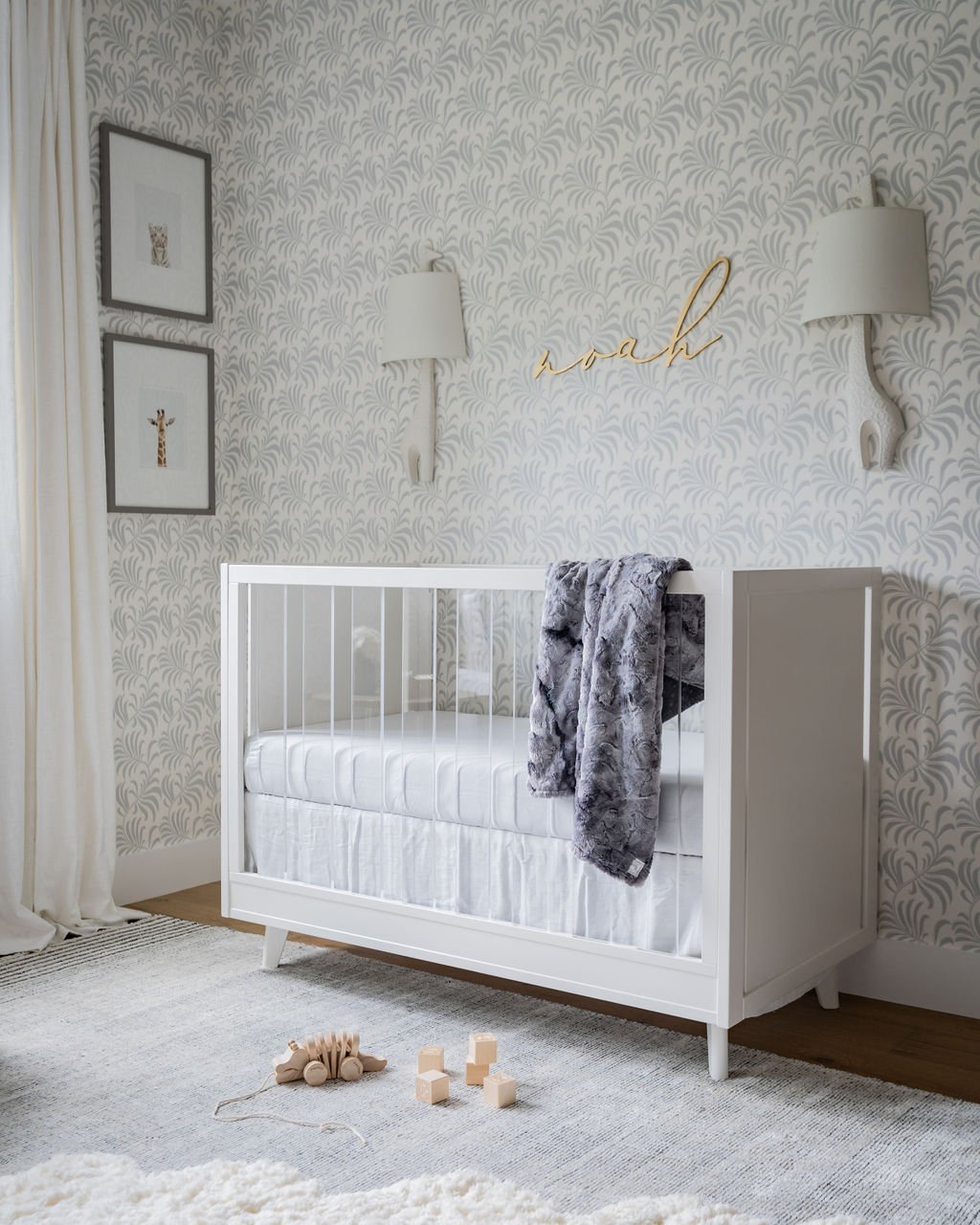HOW TO CHOOSE SAFE FABRICS FOR YOUR HOME
Hi All! Thank you so much for joining in on this important topic. If you are in the market to purchase new upholstery pieces, window coverings, bedding or any new textile item for your home, STOP. Two Sisters Ecotextiles are dropping knowledge right here on everything you need to know before you commit! We are so lucky to have Patty giving us her time and sharing their incredible knowledge about toxins in textiles and how to choose safer fabrics. I am amazed at the knowledge Patty & Leigh Anne have so there is no one better to share their insights. I promise that by the end of this post you will feel better informed about the textile process and ready to make healthier choices - because I sure did! My husband is wildly excited that after a year of on & off researching, I’ve finally placed the order for our new sectional and dining chairs. What was my hold-up? 1) Finding a manufacturer to produce non-toxic pieces (more on that later) and 2) Finding safe fabrics, which I was able to find with Two Sisters Ecotextiles. *Patting myself on the back… (even though it took me a long while).
RM: What is the story behind Two Sisters Ecotextiles and what can we expect from your products?
TSE: Fifteen years ago Leigh Anne was looking for fabric to reupholster her sofa. She did a bit of research on fabric and was startled to find how gigantically polluting the textile industry is – and how unsafe the fabrics are produced. Even the organic fabrics still used harmful chemicals in processing – bad for people and bad for the planet.
We sell only fabrics which are safe to use, and whose production has been as light as possible on the Earth. We research fabric issues and post our findings on our blog.
RM: What does it mean for a fabric to be “organic” and why is it so important?
TSE: A fabric made from organic fibers is not necessarily an organic fabric. Why is this a big deal? Think of applesauce. You can start with organic apples; but, if you add Red Dye #2, preservatives, emulsifiers, and stabilizers, etc. - you do not produce organic applesauce; and you should not feed it to your kids. Same is true with fabrics. And those equivalents of red dye #2, preservatives, etc, in fabric production remain residual in the fabric you bring into your home and they are NOT benign.
RM: Are there really that many chemicals in conventional fabrics that we need to be worried?
TSE: Yes. First, any particular fabric is, on average, 75% the fiber it purports to be – cotton, polyester, whatever – and 25% residual chemicals.
RM: Aren’t materials required to be tested for safety before becoming available to consumers?
TSE: We are always amazed that many consumers believe this. Even the US EPA reports that a full set of basic toxicology information is available for only 7% of the most commonly used chemicals of the 80,000 used in manufacturing,. These chemicals for which toxicological information exists, are known as high volume production” (HVP) chemicals because production exceeds 1,000,000 pounds. The new report issued by the President’s Cancer Panel states: “With nearly 80,000 chemicals on the market. … many of which are used by millions of Americans in their daily lives and are. … largely unregulated, exposure to potential environmental carcinogens is widespread.”
We are writing a book on this. Let’s just take one of the many chemicals we could profile that are common in fabric but which you do NOT want in your fabric: Phthalates
Phthalates are so toxic, with so many human health concerns (i.e., breast cancers, birth defects, asthma – especially harmful to newborn babies and fetuses), that they have been banned in the European Union since 2005. They’ve recently been banned in California and Washington State, but only in children’s toys. But they are used in the vast majority of textile inks and in synthetic fibers as a softener. Well-meaning parents are putting their kids to sleep on sheets full of phthalate in bedcloths full of phthalates..
GreenPeace did a study of Walt Disney childrenswear. Greenpeace tested for 5 chemicals, and found most had at least one hazardous chemical. In fact, one Winnie the Pooh raincoat contained 320,000 mg/kg total phthalates – 32% by weight of the coat.
RM: For those that are just learning and on the path to making healthier selections for their home, can you give a quick overview of synthetic fabrics (man-made fibers through chemical synthesis). What to avoid and look out for?
TSE: We think it’s important to avoid the use of all synthetic fibers if at all possible. The microfiber problem applies to all synthetics, not just single use plastics. But, since avoiding synthetics is difficult, they are eligible to be Oeko-Tex 100 certified, so look for fabrics and products, if they contain any synthetic content, that are Oeko-Tex 100 certified. The industry of chemical additives to every kind of synthetic fiber is so vast that it is not possible to give any advice of a certain fiber to use or to avoid in the case of synthetics. But the Oeko-Tex 100 certification is your assurance that no residual chemicals of concern remain in the fabric.
RM: What organic fibers should we be looking for instead?
TSE: Any 100% natural fiber fabric that is GOTS certified (best) or Oeko-Tex 100 certified is a good choice. Cellulosics, if produced in a closed loop system, and that are Oeko-Tex 100 certified, are also good choices. This includes Tencel, Modal – all Lenzing products (and our fabrics containing viscose).
RM: If one was looking at a fabric or clothing label, what would your rule of thumb be?
TSE: Any 100% natural fiber fabric that is GOTS certified (best) or Oeko-Tex 100 certified is a good choice.
RM: I have many expecting and new mom’s curious about this topic. If she is making selections for her baby’s nursery, what would your advice to her be regarding textiles?
TSE: INSIST on minimally Oeko-Tex 100 certified fabrics. Ideally you want GOTS certified fabrics.
RM: Even though cotton is a natural and pure fiber, it is known to be “the world’s dirtiest crop”. What is the difference between conventional cotton farming & production versus organic crop farming & production?
TSE: Fabric made from conventional cotton retains material amounts of the pesticides and herbicides used to raise it. It is one of the tests in GOTS – which requires zero residual pesticides in a GOTS certified fabric. Oeko-Tex 100 allows a very low, but detectable level.
Conventional natural fibers which are not certified to one of the 2 certifications that we recommend, are not necessarily a good eco choice. Cotton is one of the most chemically intensive crops grown; 25% of all pesticides used in the world are put on cotton crops. With new GMO cotton, that amount can be just about halved, but the amount of chemicals needed to grow just one pound of cotton is still very high. This is an instance of less bad not being good. Also, GMO cotton raises many new and troubling issues.
Real benefits come from organic crops:
Mitigates climate change: found that soils hold 2x more carbon as does vegetation, OA increases soil biological activity and produces greater organic matter in soil, increasing their carbon storage ability.
OA has lower N2O and CO2 emissions than conventional agriculture.
ESTIMATES that we could eliminate 55-80% of total global Greenhouse Gas emissions from agriculture if we switch to organic methods; also reduce N2O by two thirds.
Builds healthy soils.
By improving soils, making them more friable, it saves water.
By eliminating synthetic fertilizers and pesticides: improves human health and biodiversity.
RM: As the world is increasingly embracing more non-toxic practices, it is very important for us to fact-check companies that are claiming to offer healthier products or services to ensure we aren’t being misled. What is greenwashing and what should we know to protect ourselves from such companies making false claims?
TSE: Greenwashing is claiming to be eco-friendly and safe BUT not being so. Greenwashing is rampant.
Everyone should know the indispensable, The 7 Sins of Greenwashing:
http://sinsofgreenwashing.com/findings/the-seven-sins/index.html
RM: What are the main certifications that products should carry if they are truly organic and how do you rank amongst these certifications?
TSE: GOTS, the Global Organic Textile Standard, is the gold standard for fabrics.
RM: What does it mean for a fabric to be GOTS certified?
TSE: It means a whole lot, including requiring that at least 90% of fibers be certified organic (ours are 100%, except where we use viscose – made from plants in a closed loop system, which is not yet GOTS certifiable); no chemicals can be used which have been proven to harm humans or the environment at any stage of the textile production process; water must be treated to a very high standard before release; and certain worker safety and worker rights issues are honored, like no child or slave labor and a certain minimal level of safe working conditions (Still a prominent problem in textile production.) Although it does not explicitly address carbon footprint, a GOTS certified FABRIC is the best choice by far, carbon wise right now. Exponentially better than recycled polyester, for instance, or of conventional cotton fabric.
Fabric made from organic fibers which have been processed conventionally can be – and almost always is – full of residual toxic chemicals – and its production may have released tons of chemicals into the environment; its carbon footprint stinks and worker safety is suspect.
The major difference between GOTS and Oeko-Tex 100 is that Oeko-Tex 100 evaluates the safety of use of the final fabric – but the production of that fabric could have been (and often is) an environmental disaster. Oeko-Tex 100 has no requirements for worker safety, fair trade, water treatment, chemical use and disposal – just residual chemical existence.
RM: Regarding certifications - there is First-party certification, which is essentially just a self-declaration. Second-party certification, which is when a company or industry-based association creates its own verification program for certification - providing little assurance. And Third-party certification which is independently developed and verified, thus reducing conflict of interest and providing significant meaning. Third party certification is considered the highest level assurance you can achieve. What are the third party certifications we should be looking for?
There exist several third party certifications which we think every conscious consumer of fabric should be aware, it is important to know what it is they’re certifying. They are all quite different . All are voluntary. We think GOTS is the gold standard at this point in time. Oeko-Tex 100 is also public, transparent and reliable.
RM: Any final words or anything else you think my readers ought to know?
TSE: Request GOTS certified products. Insist on them. What you buy will get produced. You are powerful.
RM: THANK YOU so much for taking the time to contribute to this blog. I know we will all find your interview to be very informative, eye-opening and so helpful.
TSE: THANK YOU FOR YOUR INTEREST. VERY IMPORTANT.
If you are looking to dig deeper into this topic, Patty & Leigh Anne have an amazing website with an extensive amount of information. You can visit to learn more here.















